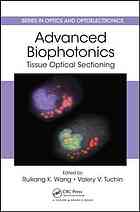

Most ebook files are in PDF format, so you can easily read them using various software such as Foxit Reader or directly on the Google Chrome browser.
Some ebook files are released by publishers in other formats such as .awz, .mobi, .epub, .fb2, etc. You may need to install specific software to read these formats on mobile/PC, such as Calibre.
Please read the tutorial at this link: https://ebookbell.com/faq
We offer FREE conversion to the popular formats you request; however, this may take some time. Therefore, right after payment, please email us, and we will try to provide the service as quickly as possible.
For some exceptional file formats or broken links (if any), please refrain from opening any disputes. Instead, email us first, and we will try to assist within a maximum of 6 hours.
EbookBell Team

4.8
24 reviews''Preface Photonics is the science and technology of generation, manipulation and detection of light. The field uses the quantum-like particles of light, i.e., the photons, instead of electrons to transmit, process, and store information. Biophotonics is recently emerged from the applications of photonics in the fields of biology and medicine. The invention of lasers in the 1960s revolutionized photonics, and made rapid technological advancements that produced useful tools, such as bar code scanners, CD players and laser pointers that are already playing an important part in our daily life. The fluorescence microscope is the first taste of the power of Biophotonics that brought us the important molecular information within cells in almost all biological laboratories. Today, biophotonics is widely regarded as the key science upon which the next generation of clinical tools and biomedical research instrumentation will be based. Although nature has used the principle of biophotonics to harness light for photosynthesis, it wasn't until about 10 years ago that a substantial translation of photonics technologies to biological applications began to transform medical and life sciences. The knowledge of biophotonics essentially includes the fundamentals of many interdisciplinary fields and how they are uniquely related to each other. Researchers and students who are interested in biophotonics should have a solid understanding of the physics of light, and the engineering of devices and instruments that are used to generate, modify, and manipulate light. On the other hand, they must also understand the fundamentals of biology and medicine, such as the molecular and cellular processes that occur in living systems to properly and meaningfully utilize the''--